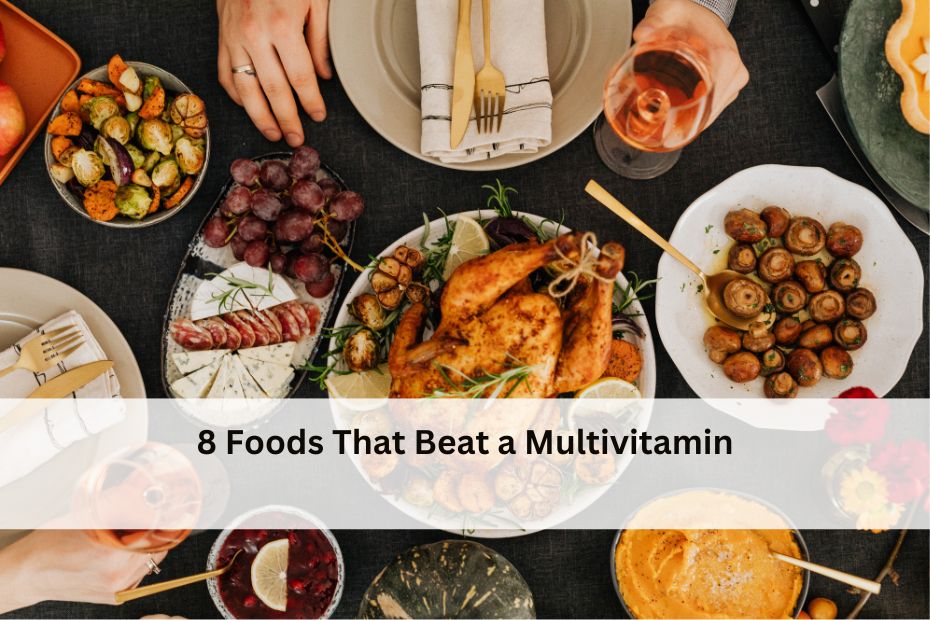Generally speaking, whole foods provide a lot of nutrients.
Consuming whole meals is preferable to taking nutritional supplements.
It’s important to note that different foods have different nutrient profiles.
One serving of some foods can provide more than 100 percent of the recommended daily value for one or more nutrients.
Here are 8 nutritious options that include more of specific vitamins and minerals than a typical multivitamin.
1. Kale
Kale is extremely healthy.
It is one of the most nutrient-dense foods on the planet and particularly high in vitamin K1.
Vitamin K1 is essential for blood clotting and may play a role in bone health (2).
One cup (21 grams) of fresh kale contains (3Trusted Source):
- Vitamin K1: 68% of the Reference Daily Intake (RDI)
- Vitamin C: 22% of the RDI
Furthermore, kale is high in fiber, manganese, vitamin B6, potassium, and iron.
2. Seaweed
Iodine deficiency is one of the most common nutrient deficiencies in the world, affecting nearly one-third of the global population (4, 5, 6). Iodine deficiency causes thyroid problems in adults. During pregnancy, it may also increase the risk of intellectual and developmental abnormalities in your baby (5, 7Trusted Source). Seaweed — such as kelp, nori, kombu, and wakame — are all very rich in iodine (8). The RDI is 150 mcg per day. However, different types of seaweed contain varying amounts of iodine. In general, brown seaweeds — such as wakame and kombu — provide higher amounts than green seaweeds, such as nori (9). Kombu has a very high iodine content. One gram of dried kombu may contain 2,343 mcg, far exceeding the RDI (10Trusted Source). It even exceeds the upper level of safe intake, which is 1,100 mcg per day. For this reason, seaweed should not be consumed daily, as it may cause adverse effects (11). Nevertheless, occasional seaweed consumption is a cheap, effective way to prevent iodine deficiency.
3. Liver
The liver is the most nutritious part of any animal.
It’s rich in essential nutrients, including vitamin B12, vitamin A, iron, folate, and copper.
Vitamin B12 intake is particularly important, as many people are lacking in it. It plays a crucial role in cell, brain, and nervous system health.
Beef liver contains high amounts of vitamin B12, vitamin A, and copper. A 3.5-ounce (100-gram) serving boasts (12):
- Vitamin B12: 1,200% of the RDI
- Vitamin A: 600–700% of the RDI
- Copper: 600–700% of the RDI
However, be sure not to eat liver more than once or twice per week, as you may run the risk of nutrient toxicity.
Brazil Nuts
If you’re lacking in selenium, Brazil nuts may be the perfect snack.
Selenium is essential for thyroid and immune system function, as well as antioxidant activity (13).
The RDI is 50–70 mcg, which may be achieved by consuming just 1 large Brazil nut.
Each nut may provide up to 95 mcg of selenium.
The upper tolerance level for selenium is set at about 300–400 mcg per day for adults, so make sure not to eat too many of them (14, 15Trusted Source).
Shellfish
Shellfish, such as clams and oysters, are among the most nutritious types of seafood.
Clams are packed with vitamin B12. In fact, 3.5 ounces (100 grams) provide over 1,600% of the RDI.
Furthermore, they contain high amounts of other B vitamins, as well as potassium, selenium, and iron.
Oysters are also nutritious. They’re abundant in zinc and vitamin B12, with 3.5 ounces (100 grams) packing 200–600% of the RDI for each nutrient.
Clams and oysters may be the perfect food for older adults. Higher amounts of vitamin B12 are recommended after age 50 because your digestive system’s ability to absorb vitamin B12 may decrease with age (16, 17, 18).

